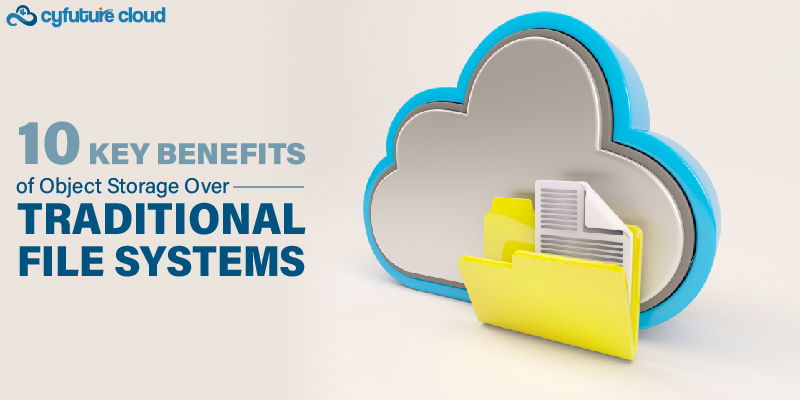Table of Contents
“Heterogeneous cloud platforms consist of a mix of different technologies, vendors, and deployment models, offering greater flexibility and choice to users. On the other hand, homogeneous cloud platforms are built on a standardized set of technologies, often from a single vendor, providing a more consistent and integrated experience across the entire cloud environment.”
Cloud platforms are virtual environments offered by service providers for storing, managing, and accessing data and applications over the internet. They provide scalability, flexibility, and cost-efficiency, allowing businesses to focus on core activities while relying on the provider for infrastructure management. Cloud computing offers benefits like on-demand resource availability, scalability, data storage, and cost savings.
It enables streamlined operations, collaboration, and the use of advanced technologies without heavy upfront investments. There are two types of cloud platforms: heterogeneous and homogeneous. Heterogeneous platforms integrate multiple providers, offering flexibility and vendor diversity. Homogeneous platforms, provided by a single provider, offer comprehensive services and streamlined management within their ecosystem. They are chosen for extensive requirements or a unified cloud solution.
In this article, we will explore Homogeneous and heterogeneous platforms, their pros and cons, and everything you need to know.
So, let’s get started!
Understanding Heterogeneous Cloud Platforms in Detail
The integration of numerous cloud service providers and technologies into a single environment is referred to as heterogeneous cloud platforms. These platforms let businesses use a variety of services, infrastructure, and tools from several providers, including AWS, Azure, GCP, and others. The following are the major characteristics of heterogeneous cloud platforms:
- Vendor Diversity: Heterogeneous platforms offer the flexibility to choose services from multiple cloud providers, allowing organisations to select the best-fit solutions for their specific needs. This diversity reduces dependence on a single vendor and provides access to a broader range of capabilities.
- Interoperability: Heterogeneous platforms facilitate interoperability between different cloud environments. They enable seamless integration and data exchange between various cloud services and applications, promoting flexibility and avoiding vendor lock-in.
- Flexibility and Scalability: With a heterogeneous cloud platform, organisations can scale their infrastructure and services as needed by utilising the strengths of different providers. This scalability allows businesses to adapt to changing demands and handle peak workloads effectively.
Advantages and Disadvantages
Heterogeneous cloud platforms offer several advantages and disadvantages to organisations:
Advantages:
- Vendor Diversity: By leveraging multiple cloud providers, organisations can select the most suitable services from each vendor, benefiting from their respective strengths and specialties.
- Flexibility: Heterogeneous platforms enable organisations to adopt a multi-cloud strategy, tailoring their infrastructure and services to meet specific requirements. This flexibility allows for optimised resource allocation and cost savings.
- Risk Mitigation: By avoiding vendor lock-in, organisations reduce the risk of dependency on a single provider. In case of service disruptions or pricing changes, they have the option to migrate workloads to alternative providers seamlessly.
Disadvantages:
- Complexity: Managing multiple cloud environments and integrating different services can introduce complexity in terms of configuration, deployment, and monitoring. It requires additional expertise and resources to ensure smooth operations.
- Interoperability Challenges: Integrating services from different providers may introduce interoperability challenges, such as data transfer and compatibility issues. Organisations need to carefully design and implement solutions that can effectively communicate across diverse cloud ecosystems.
Use Cases and Example
Heterogeneous cloud platforms find application in various scenarios:
- Hybrid Cloud Environments: Organisations often adopt a hybrid cloud approach by combining private cloud resources with public cloud services. Heterogeneous platforms enable seamless integration and data flow between on-premises infrastructure and multiple public cloud providers.
- Multi-Cloud Strategy: Organisations may choose to distribute workloads across different cloud providers to take advantage of their unique offerings. Heterogeneous platforms allow for workload placement optimization and cost optimization by leveraging the strengths of multiple providers.
- Data Replication and Backup: Heterogeneous platforms can facilitate data replication and backup across multiple cloud environments, ensuring data resilience and disaster recovery capabilities.
Understanding Homogeneous Cloud Platforms in Detail
Homogeneous cloud platforms are characterised by the provision of comprehensive cloud environments by a single cloud service provider, such as Amazon Web Services (AWS), Microsoft Azure, or Google Cloud Platform (GCP). These platforms offer a wide spectrum of services, tools, and infrastructure within their respective ecosystems.
- Integrated Ecosystem: Homogeneous platforms provide a tightly integrated ecosystem where all the services and tools are designed to work seamlessly together. This integration allows for smooth interoperability, simplified management, and optimised performance within the platform.
- Streamlined Management: With a homogeneous cloud platform, organisations can centralise their management tasks, including provisioning, monitoring, and scaling, within a single provider’s environment. This streamlined management simplifies operations and reduces complexity.
- Optimised Performance: Homogeneous platforms are optimised to deliver high-performance and low-latency services within their ecosystem. The services and infrastructure components are designed to work efficiently together, resulting in optimised performance and enhanced user experience.
Advantages and Disadvantages
Homogeneous cloud platforms offer several advantages and disadvantages to organisations:
Advantages:
- Integrated Services: Homogeneous platforms provide a wide range of services and tools that are designed to work together seamlessly. This integration simplifies development, deployment, and management processes, enabling organisations to build and run applications more efficiently.
- Streamlined Management: With a single provider environment, organisations can streamline their management tasks, including resource allocation, monitoring, and security. The unified management interface reduces complexity and enhances operational efficiency.
- Vendor Support: Homogeneous platforms offer dedicated Server vendor support, including documentation, training, and technical assistance. This support can be beneficial when organisations require assistance in deploying and optimising services within the platform.
Disadvantages:
- Vendor Lock-In: Adopting a homogeneous cloud platform may result in vendor lock-in, limiting organisations’ flexibility to switch providers easily. Migrating applications and data to another platform can be complex and time-consuming.
- Limited Vendor Diversity: Homogeneous platforms restrict organisations to a single provider’s ecosystem, limiting access to the unique features and capabilities offered by other providers. This lack of vendor diversity may impact organisations seeking specialised services from multiple vendors.
Use Cases and Examples
Homogeneous cloud platforms find application in various use cases:
- Application Development and Deployment: Organisations can utilise homogeneous platforms to develop, deploy, and scale applications within a unified environment. The integrated services, such as compute, storage, and databases, streamline the development lifecycle and enable efficient application management.
- Big Data Analytics: Homogeneous platforms often provide comprehensive data analytics services, allowing organisations to process and analyse large volumes of data within the platform. This simplifies data workflows and facilitates data-driven decision-making.
- Internet of Things (IoT): Homogeneous platforms offer IoT-specific services and tools, enabling organisations to build and manage IoT applications and devices within a unified ecosystem. This facilitates the integration of IoT data with other services and enables real-time monitoring and analytics.
Choosing the Right Cloud Platform
Several considerations should be considered while choosing a cloud platform:
- Business Requirements: An in-depth assessment of the distinctive demands of our organisation must be conducted, encompassing aspects such as scalability, performance, security, compliance, and cost-effectiveness. It is imperative to align the capabilities of various cloud platforms with the specific necessities of our business, as each platform exhibits superiority in different domains.
- Workload Compatibility: Evaluate the compatibility of your existing workloads and applications with the cloud platform. Consider whether they require specific services, databases, or tools that are available within the platform’s ecosystem.
- Integration and Interoperability: Determine the integration requirements of your systems. If you have existing on-premises infrastructure or other cloud deployments, consider the ease of integration and interoperability between the platforms.
- Vendor Lock-In: Evaluate the level of vendor lock-in associated with the platform. Consider the ease of migrating workloads and data to another platform if necessary and assess the impact on your business operations.
- Cost and Pricing Models: Understand the pricing structures, including factors like compute, storage, data transfer, and support. Compare the costs of different platforms based on your anticipated usage patterns and projected growth.
Evaluating Business Needs
To select the best cloud platform, you must first assess your company needs and match them with the platform’s capabilities. Think about the following:
- Scalability and Performance: If your company requires quick scalability and high-performance computing, assess the platform’s capacity to manage fluctuating workload demands while delivering optimal performance.
- Security and Compliance: Examine the platform’s security features, data encryption, access restrictions, and compliance certifications to verify they meet your industry’s data protection and regulatory needs.
- Service Offerings: Evaluate the breadth and depth of services offered by the platform. Consider whether it provides the necessary infrastructure, databases, analytics tools, and AI/ML capabilities to meet your business requirements.
- Support and SLAs: Consider the level of support provided by the platform vendor, including documentation, training, and customer service. Review the Service Level Agreements (SLAs) to understand the vendor’s commitments regarding uptime, availability, and support response times.
Hybrid Cloud as a Solution
In many cases, a hybrid cloud approach can be an effective solution. A hybrid cloud strategy combines the use of both public and private cloud environments, allowing organisations to leverage the benefits of each. Consider the following aspects when implementing a hybrid cloud:
- Data Sensitivity and Compliance: Use a private cloud or on-premises infrastructure for sensitive data or applications that require strict compliance regulations. Public cloud services can be used for less sensitive workloads or when scalability and flexibility are essential.
- Bursting and Scalability: Leverage the scalability of public cloud platforms to handle peak workloads or sudden spikes in demand. A hybrid approach enables you to scale resources up or down dynamically as needed, optimising cost and performance.
- Data Replication and Disaster Recovery: Implement a hybrid cloud solution for data replication, backup, and disaster recovery. By storing redundant copies of data across multiple cloud environments, you can ensure data resilience and business continuity.
- Workload Placement Optimization: Analyse your workloads and identify the most suitable environment for each. Consider factors such as data dependencies, performance requirements, cost considerations, and regulatory compliance.
By adopting a hybrid cloud approach, organisations can optimise their infrastructure, balance workloads, achieve cost savings, and maintain control over sensitive data while taking advantage of the scalability and flexibility offered by public cloud platforms.
Different Aspects of Homogeneity in Cloud Computing:
| Aspect | Description |
|---|---|
| Infrastructure | Standardized hardware and software components across servers and data centers |
| Interoperability | Consistent interfaces and protocols facilitating seamless data exchange |
| Scalability | Uniform scaling capabilities enabling the expansion or reduction of resources |
| Management | Unified management interfaces for administering diverse cloud resources |
| Performance Efficiency | Consistent performance levels regardless of the underlying hardware disparities |
Final Words
Choosing the cloud platform requires evaluating factors such as business requirements, workload compatibility, integration capabilities, vendor lock-in, and cost models.
Future trends in cloud computing include edge computing for IoT and real-time data processing, serverless computing for simplified development and cost optimization, multi-cloud and hybrid strategies for workload portability, AI/ML integration for advanced analytics and automation, enhanced security and compliance measures, and the potential impact of quantum computing.
Staying informed about these trends enables organizations to leverage the latest innovations and technologies to drive their business forward in the evolving cloud computing landscape. Join hands with Cyfuture Cloud and learn how cloud technology is revolutionizing the industry.
Recent Post
Send this to a friend

 Server
Colocation
Server
Colocation CDN
Network
CDN
Network Linux
Cloud Hosting
Linux
Cloud Hosting Kubernetes
Kubernetes Pricing
Calculator
Pricing
Calculator
 Power
Power
 Utilities
Utilities VMware
Private Cloud
VMware
Private Cloud VMware
on AWS
VMware
on AWS VMware
on Azure
VMware
on Azure Service
Level Agreement
Service
Level Agreement 




















